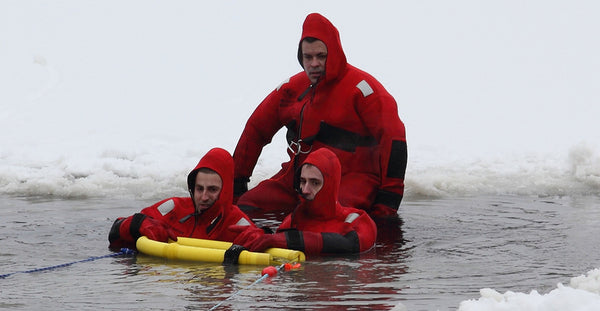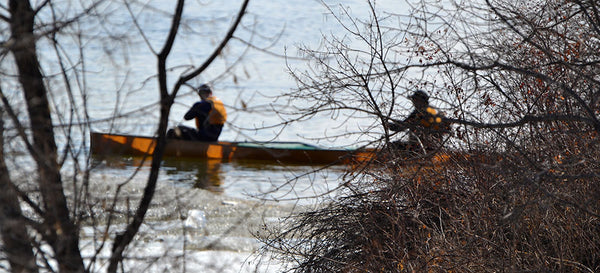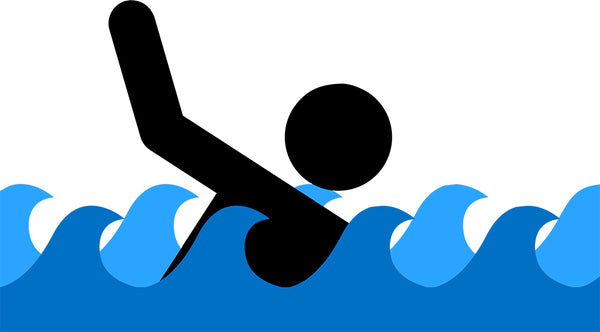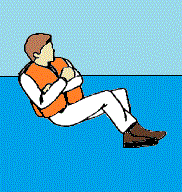Cold water immersion
Remember those cold water safety videos we had to watch in high school canoe club? (Especially that one where the guy actually died right after the filming? -still scarred from that one.) We’ve long been aware of the dangers of hypothermia, and have been taught numerous times how to recognize the stages, what to do, what not to do.
What many of us don’t know is that hypothermia is not the most dangerous part of being in cold water.
Unless you are out on the water in a suit like this, the effects of cold water immersion will be instantaneous and potentially life threatening.

Tough to paddle with all that suit on.
A lot of research has been done since those high school days. (Shoot…. I’m aging myself.) We now know that when your body is immersed in cold water, it goes through 4 phases:
- Cold Shock Response
- Functional disability
- Hypothermia
- Circum-rescue Collapse

Cold Shock Response – This is the initial reaction to being enveloped in cold water, and is probably the most dangerous. For about one minute your breathing rate and heart rate will skyrocket. You will gasp for air and possibly hyperventilate, and your ability to hold your breath will diminish drastically. (Even an ocean pearl diver will notice this.)
Since immersion in cold water has both physiological and behavioural effects, many people panic at this point. “Sudden drowning syndrome” – a Coast Guard term – can occur when people breath in water. The increased blood pressure can trigger a heart attack, and CO2 levels can drop from rapid breathing and cause confusion or unconsciousness.
Stay calm. Know that this will pass in about a minute.

Functional disability – Ok, you’ve survived the initial shock. You now have about ten minutes of muscle function before your body stiffens up like roadkill on a winter highway. Your body protects your core temperature by reducing blood flow to the extremities, so your hands stop working and you can’t seem to move your arms and legs properly. Before this happens is your best chance to get yourself in the safest place and call for help.
Note: this is not the time to be wasting trying to put on your PFD. It should already BE ON.
(Had to put that in. There are a lot of muchachos out there who still believe they can Shwarzenegger their way into their PFD no matter how cold the water is. While simultaneously fighting a man eating shark, of course.)

Hypothermia – Here’s where there is a lot of misunderstanding. First of all, don’t panic – you will not become even mildly hypothermic for at least a half hour, even in ice water. Conserve heat and energy and do your best to make rational decisions.
Hypothermia has three stages: mild, moderate and severe. After a half hour you will go into mild hypothermia. You’ll start shivering and your body temperature will start dropping. After it drops about 5 degrees Celcius you will be moderately hypothermic, which may last for up to two hours. You may get confused, dizzy, lose the ability to talk properly and possibly lose consciousness.
As you get near 10 degrees of body heat lost you enter severe hypothermia and may go into cardiac arrest.

Circum-rescue collapse – You’ve made it this far. Stress hormones have been blasting through your system, keeping you alive. When you know help is there, your body relaxes a little – let’s go, in a sense. People have collapsed and even gone into cardiac arrest at this point. It is vital that your rescuers handle you very gently, heat you externally (no food or drink) without massaging or moving you too much, and monitor your cardiac state diligently.
So there you go. And if you want an expert's take on things, Dr. Gordon Giesbrecht of the University of Manitoba (otherwise known as Dr. Popsicle) has done hundreds of cold water immersion studies and has broken down the phases into an easy to remember format called the 1-10-1 Principle:
- 1 – for one minute you will be in cold shock: gasping, heart pumping and breathing fast and hard.
- 10 – over the next ten minutes you will lose muscle function.
- 1 – it will take about one hour for hypothermia to render you unconscious.
Here is a short video describing this principle:
In summary, if you find yourself immersed in cold water:
- Don’t try to swim to shore. Stay with your boat if you can.
- Keep your head and neck as far out of the water as possible.
- Stay still. Your body can heat the water trapped in your clothing.
- Get into HELP (Heat Escape Lessening Position - see picture below).
- Be aware of the stages of cold water immersion and keep yourself calm.



Leave a comment